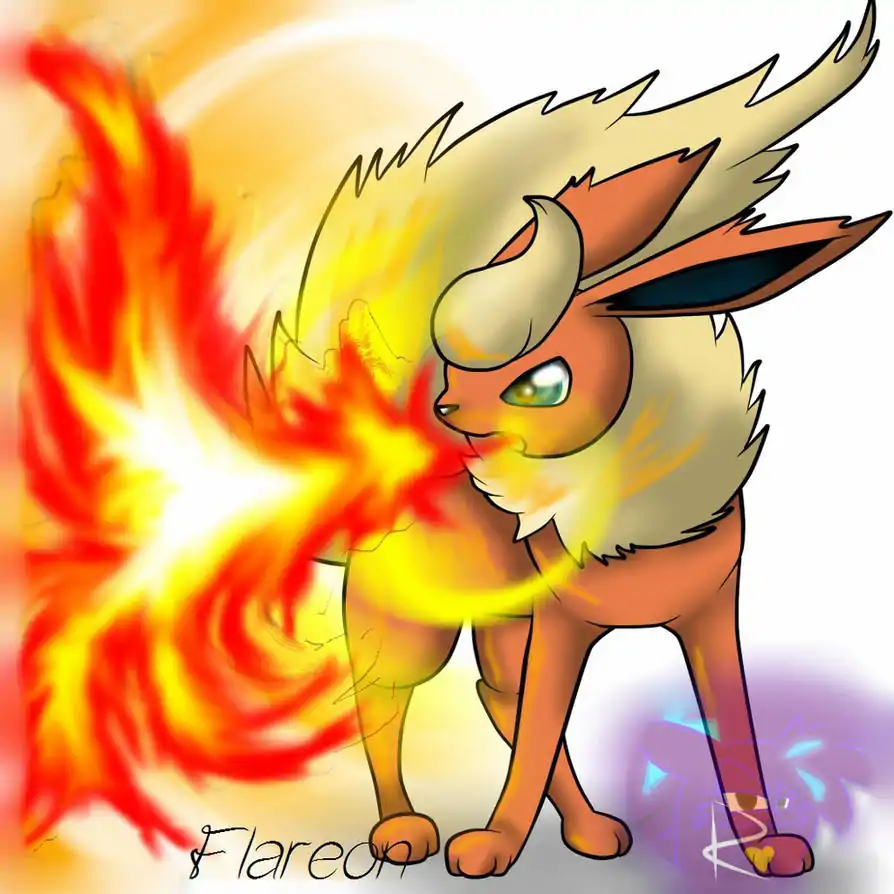Flareon (5e Creature)
Flareon
|
Small elemental, any alignment Armor Class 13 (natural armor)
Damage Resistances radiant Flash Fire. Whenever the flareon is subjected to fire damage, it takes no damage, and instead, its next attack deals an additional 9 (2d8) fire damage. Heated Body. A creature that touches the flareon or hits it with a melee attack while within 5 feet of the flareon takes 7 (2d6) fire damage. ACTIONSFlare Blitz. Melee Weapon Attack: +8 to hit, range 5 ft., one target. Hit: 19 (3d8 + 5) bludgeoning damage plus 16 (3d10) fire damage. Will-O-Wisp. The flareon targets one creature within 60 feet of it. The target must succeed on a DC 15 Dexterity saving throw or it ignites. Until a creature takes an action to douse the fire, the target takes 5 (1d10) fire damage at the start of each of its turns. While this effect persists, the target deals only half damage with weapon attacks that use Strength.
|
Flareon are powerful fire elementals that rely on physical attacks to defeat their opponents. Their internal fire burns at 1650 degrees Fahrenheit (900 degrees Celsius). They are one of the possible products of an evolved eevee. |
Back to Main Page → 5e Homebrew → 5e Creatures


